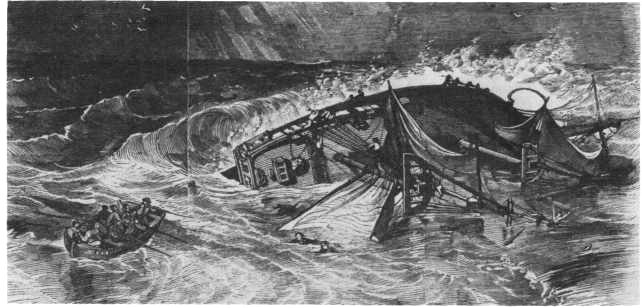Somers II (Brig)

Richard Somers, born in 1778 or 1779 at Great Egg Harbor, N.J., was appointed midshipman on 25 April 1797 and served in the West Indies during the Quasi War with Prance in frigate United States commanded by Capt. John Barry. Promoted to lieutenant on 21 May 1799, Somers was detached from United States on 13 June 1801 and ordered to Boston on 30 July 1801. He served in the latter frigate in the Mediterranean.
After Boston returned to Washington, Somers was furloughed on 11 November 1802 to await orders.
On 5 May 1803, Somers was ordered to Baltimore to man; fit out; and command Nautilus; and, when that schooner was ready for sea, to sail her to the Mediterranean. Nautilus got underway on 30 June; reached Gibraltar on 27 July; and sailed four days later to deliver dispatches to Capt. John Rodgers at Malaga, Spain. He then returned to Gibraltar to meet Commodore Edward Preble, in Constitution, who was bringing a new squadron for action against the Barbary pirates.
Nautilus sailed with Preble on 6 October to Tangier where the display of American naval strength induced the Europeans of Morocco to renew the treaty of 1786. Thereafter, Tripoli became the focus of Preble's attention.
Somers' service as commanding officer of Nautilus during operations against Tripoli won him promotion to master commandant on 18 May 1804. In the summer, he commanded a division of gunboats during five attacks on Tripoli.
On 4 September 1804, Somers assumed command of bomb ketch Intrepid which had been fitted out as a "floating volcano" to be sailed into Tripoli harbor and blown up in the midst of the corsair fleet close under the walls of the city. That night, she got underway into the harbor, but she exploded prematurely, killing Somers and his entire crew of volunteers.
II
The second Somers was launched by the New York Navy Yard on 16 April 1842, and was commissioned on 12 May 1842, Comdr. Alexander Slidell Mackenzie in command.
After a shakedown cruise in June and July to Puerto Rico and back, the new brig sailed out of New York harbor on 13 September 1842 bound for the Atlantic coast of Africa with dispatches for frigate Vandalia. On this voyage, Somers was acting as an experimental schoolship for naval apprentices.
After calls at Madeira, Tenerife, and Porto Praia, looking for Vandalia, Somers arrived at Monrovia, Liberia, on 10 November and learned that the frigate had already sailed for home. The next day, Mackenzie headed for the Virgin Islands hoping to meet Vandalia at St. Thomas before returning to New York. On the passage to the West Indies, the officers noticed a steady worsening of morale. On the 26th, Mackenzie arrested Midshipman Philip Spencer, the son of Secretary of War Spencer, for inciting mutiny. The next day, Boatswain's Mate Samuel Cromwell and Seaman Elisha Small were also put in irons.
An investigation by the officers of the ship over the next few days indicated that these men were plotting to take over the ship, throw the officers and loyal members of the crew to the sharks, and then to use Somers for piracy. On 1 December, the officers reported that they had "come to a cool, decided, and unanimous opinion" that the prisoners were "guilty of a full and determined intention to commit a mutiny;" and they recommended that the three be put to death. The plotters were promptly hanged.
Somers reached St. Thomas on 5 December and returned to New York on the 14th. She remained there during a naval court of inquiry which investigated the mutiny and the execution and the subsequent court martial. Both proceedings exonerated Mackenzie.
On 20 March 1843, Lt. John West assumed command of Somers, and the brig was assigned to the Home Squadron. For the next few years, she served along the Atlantic coast and in the West Indies.
Somers was in the Gulf of Mexico off Vera Cruz at the opening of the Mexican War in the spring of 1846; and, but for runs to Pensacola for logistics, she remained in that area on blockade duty until winter. On the evening of 26 November, the brig, commanded by Raphael Semmes, was blockading Vera Cruz when Mexican schooner Criolla slipped into that port. Somers launched a boat party which boarded and captured the schooner. However, a calm prevented the Americans from getting their prize out to sea so they set fire to the vessel and returned through gunfire from the shore to Somers, bringing back seven prisoners. Unfortunately, Criolla proved to be an American spy ship operating for Commodore Conner.
On 8 December, while chasing a blockade runner off Vera Cruz, Somers capsized and foundered in a sudden squall. Thirty-two members of her crew drowned and seven were captured.


